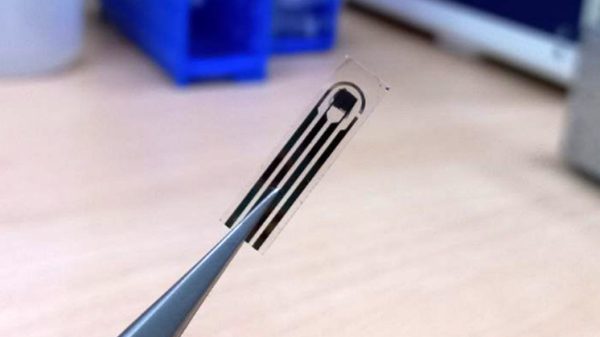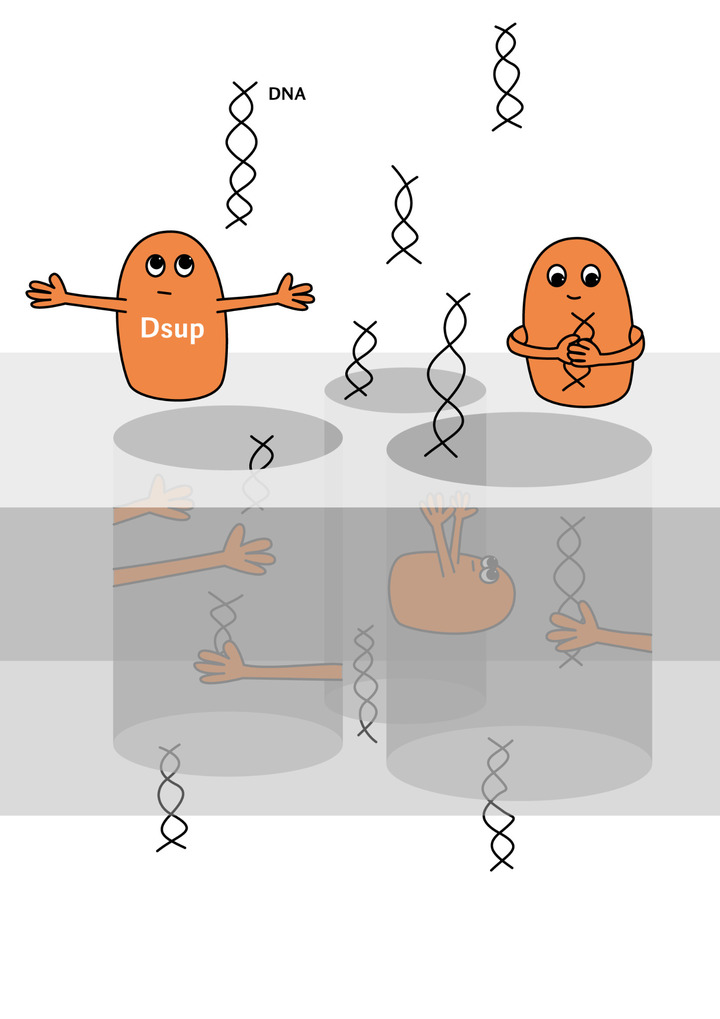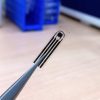The essence is a special protein that makes these animals “superheroes”
A unique protein that protects tardigrades from the effects of radiation has proven useful to scientists for isolating DNA from huge volumes of solutions. For example, when analyzing water from a hot spring or biological materials of a potential criminal taken from a crime scene. In this case, the protein plays the role of a marker, or identification molecule, due to its ability to quickly find DNA and envelop it, “protecting” it from external influences. The corresponding article by scientists from the Joint Institute for Nuclear Research (JINR) was published in the journal Biotechnology Progress
 Tardigrade. Source Scientific Reports.
Tardigrade. Source Scientific Reports.
The protein that attracted the attention of researchers is called Dsup (from the English Damage suppressor — “damage blocker”). It is this that makes the tardigrade Ramazzottius varieornatus one of the most stress-resistant animals on Earth. It protects her DNA from damage during exposure to extreme conditions such as radiation or oxidative stress. Therefore, the small, modest tardigrade — This is a “Superman”, capable of going into outer space without a spacesuit without harming his health. Scientists are, of course, working on how to use its protein to increase stress resistance in other organisms. However, geneticists from the Laboratory of Nuclear Problems (DLNP) of JINR found a completely unexpected use for it. Dsup was proposed to create a new hybrid material that can significantly simplify the process of isolating extracellular DNA from solutions.
Together with scientists from the Center for Applied Physics of the Laboratory of Nuclear Reactions (FLNR), they began to develop a membrane – a unique porous material coated with tardigrade protein.
 Scheme of operation of the membrane with the Dsup protein. Provided by JINR
Scheme of operation of the membrane with the Dsup protein. Provided by JINR
The idea is that the Dsup protein is able to effectively coat a DNA molecule. By anchoring this protein to the surface of a membrane, it can extract DNA molecules from solution, much like a fisherman catches fish.
The new hybrid material's ability to quickly extract extracellular DNA from samples opens up new opportunities in biotechnology, medicine, biomonitoring and many other areas, including criminology. For example, when studying blood stains, you can quickly isolate human DNA and analyze it to determine whether it belongs to a specific individual.
One of the authors of the work from DLNP, Mikhail Zarubin, gave another example of using such in the future membranes for rapid research of hot springs: “Scientists in our laboratory often take samples of solutions for research, for example, from hot springs. Ideally, we want to make a compact syringe with a nozzle into which the hybrid membrane described above is inserted. Such a syringe will allow us to pump water from a source in the field, and then extract from the membrane the DNA of its inhabitants that interests us.”
























































Свежие комментарии